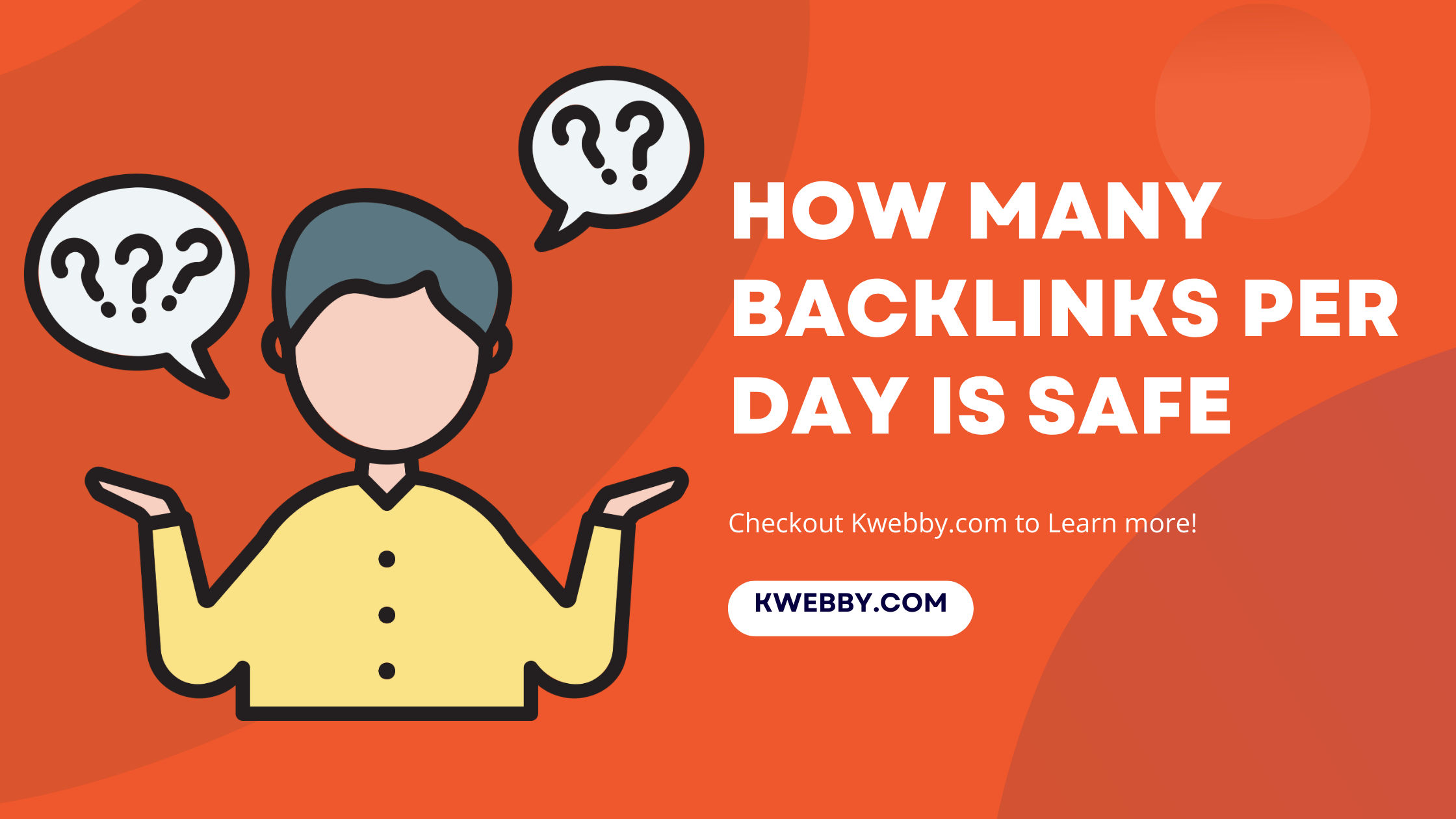Home / Blog / SEO / Advanced SEO Techniques / Google’s Way to Use Internal Linking for SEO (3 Tips)
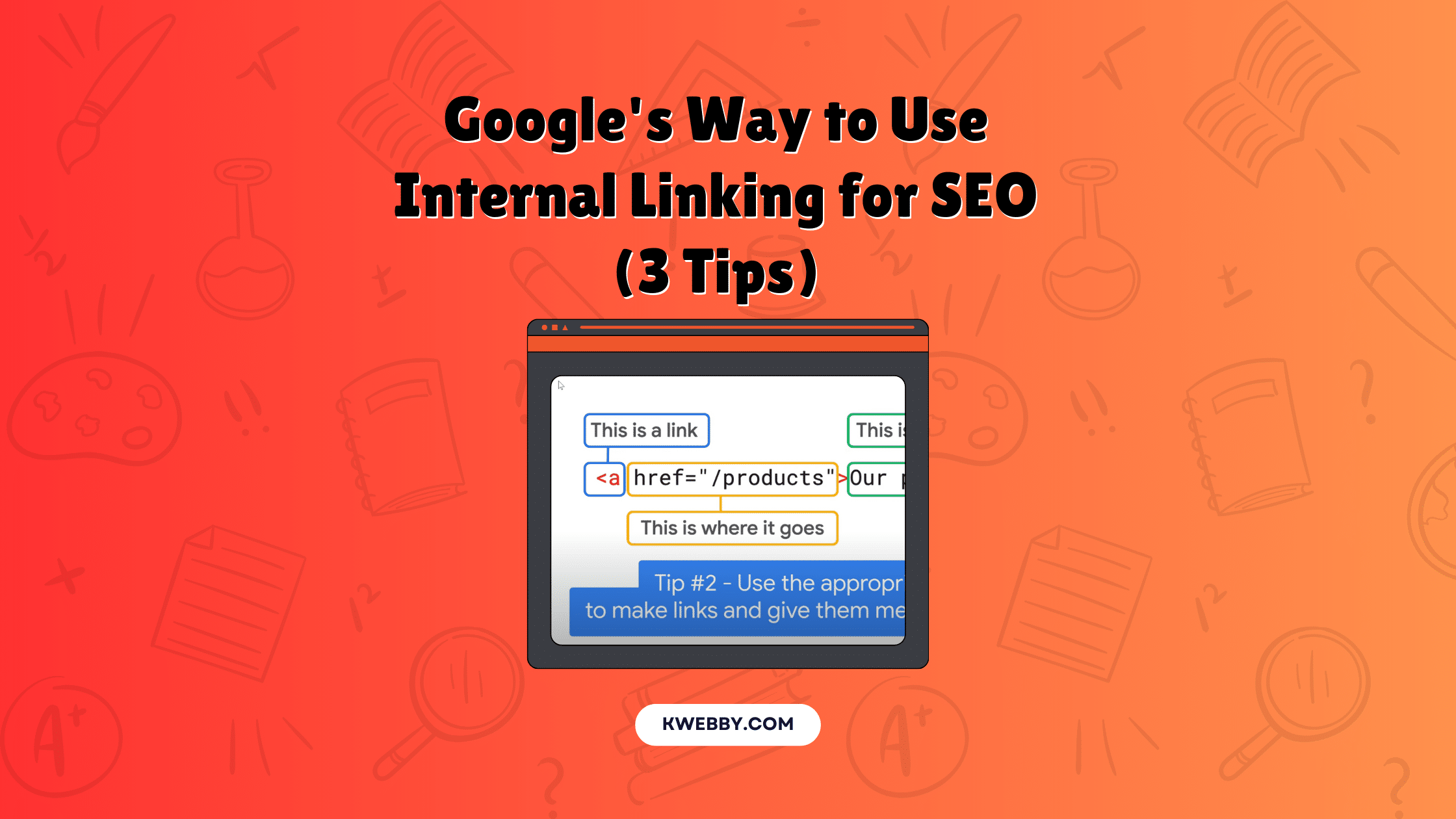
Google’s Way to Use Internal Linking for SEO (3 Tips)
Choose Your Language:
Internal linking is a powerful strategy that can significantly enhance both the user experience and the discoverability of your website by search engines.
Let’s delve into how to effectively implement internal links, drawing insights from a recent discussion by SEO expert Martin Splitt.
1 Google Answers Why Internal Links are Important for SEO
Internal links serve as a navigational tool on your website, guiding users to related content. As Martin mentions, “They help your users identify the next steps to take, and they connect individual pages on your site to each other.”
Having a structured internal linking strategy is crucial for providing clarity and facilitating easy access to information.
1.1 Step-by-Step Instructions for Implementing Internal Links
- Identify Your Content: Assess all your pages to determine how they interrelate. Look for opportunities to connect relevant articles or sections.
- Use Meaningful Anchor Text: Each internal link should have descriptive anchor text. For example, instead of linking simply “click here”, use “kitten food guide” to indicate precisely where the link leads. As Martin points out, “each link has meaningful words as anchor text,” which enhances the user experience.
- Maintain a Balanced Approach: Avoid linking everything in a single page. Overdoing it can lead to confusion. Aim for a balance—“not too little, not too many,” as per Martin’s advice. Choose links that genuinely add value to your readers.
- Implement Correct HTML Structure: Always use the `<a>` element for links. This is essential since “the HTML has an element dedicated for links.” For instance, here’s an example of a proper anchor link:
<a href="/kitten-food-guide">Check out our kitten food guide</a>This ensures both search engines and users can identify links clearly.
- Test Your Links Regularly: Ensure that all internal links are functional and lead to the appropriate pages. As the website grows, it’s easy for links to become outdated or point to non-existent pages.
2 Example of Effective Internal Linking
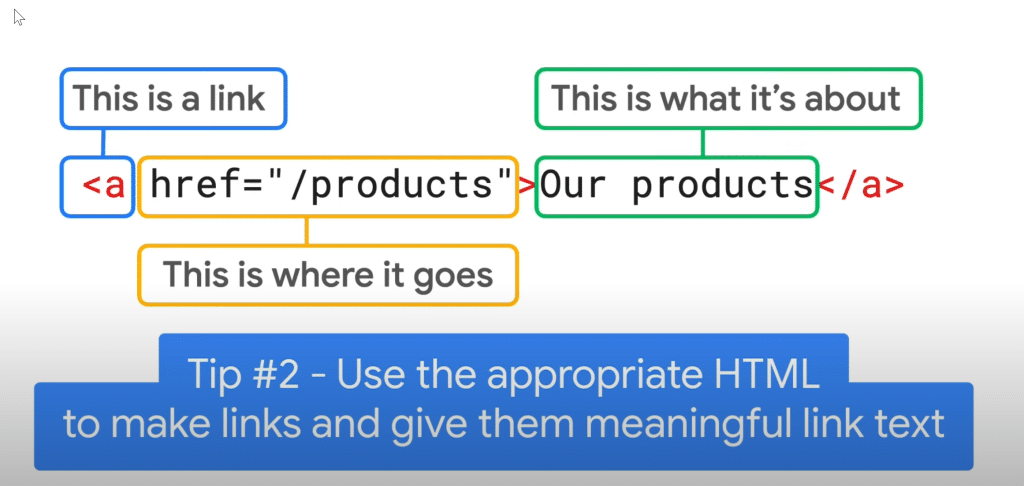
Let’s consider a pet blog that has multiple articles related to kitten care. If one article discusses general kitten health, it might include links to:
- Ideal Kitten Nutrition
- Common Kitten Health Issues
- Kittens and Vaccinations
Here’s how the anchor text might look:
<p>For more on what to feed your new kitten, check our <a href="/ideal-kitten-nutrition">Ideal Kitten Nutrition</a> article.</p>
<p>Also, learn about <a href="/common-kitten-health-issues">Common Kitten Health Issues</a> to keep your pet healthy.</p>Here are comparison of Meaningful link text and not-so meaningful link text;
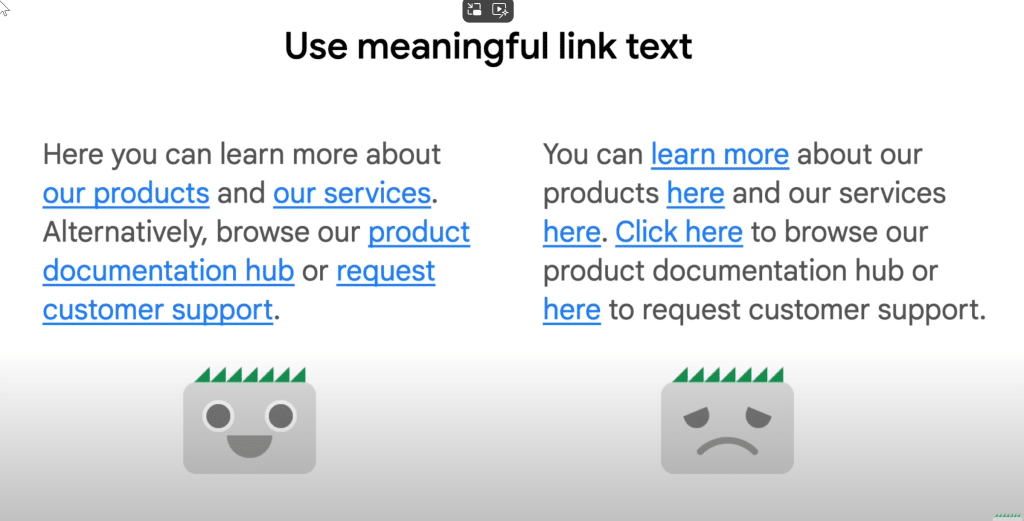
3 Example of Bad Internal Links
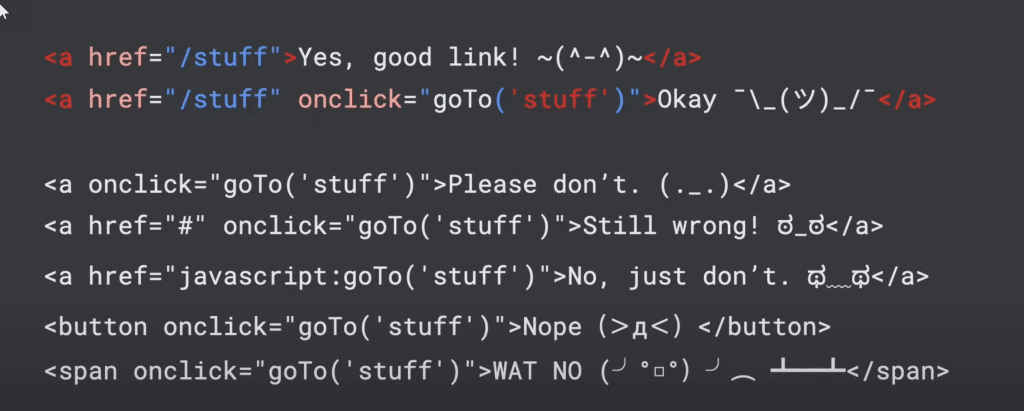
While internal linking can enhance user experience and SEO, poorly structured links can confuse users and hinder the functionality of your site. A bad internal link example might look like this:
<a onclick="goTo('stuff')">Please don’t. (._.)</a>
<a href="#" onclick="goTo('stuff')">Still wrong! d_d</a>
<a href="javascript:goTo('stuff')">No, just don’t. G</a>
<button onclick="goTo('stuff1')">Nope (>A<)</button>
<span onclick="goTo('stuff')">WAT NO (J 0n°) J— 1 /"</a>Instead, Here’s the correct way to write;
<a href="/stuff "> Yes, good link! ~(A-A)~</a>
<a href="/stuff" onclick="goTo( "stuff")"> Okay -\_(W)</a>These examples illustrate problematic practices, such as using JavaScript actions instead of valid anchor tags, unclear descriptive text, and an overall lack of efficient structure.
Such links can frustrate users, causing them to leave your site instead of exploring further. Focus on creating meaningful and accessible links to ensure your audience enjoys a seamless journey through your content.
4 Use Linkwhisper for Auto Internal Linking for WordPress
LinkWhisper is a remarkable tool designed to simplify and enhance the internal linking process for WordPress users. This powerful plugin automatically suggests relevant internal links while you write, ensuring that your content is well-connected and optimised for SEO. Here’s how to get started with LinkWhisper, making your internal linking strategy both effortless and efficient.
4.1 Features of LinkWhisper
- Automated Link Suggestions: LinkWhisper scans your existing content and recommends applicable internal links that can be added to your articles. This saves you time and ensures that you don’t miss valuable linking opportunities.
- Easy Link Management: You can quickly view all your internal links on a single dashboard, making it easier to manage and modify links as your site evolves.
- Customizable Anchor Text: The plugin allows you to edit the anchor text suggestions, ensuring that they are meaningful and aligned with your content strategy.
- Detailed Analytics: Gain insights into how many internal links are present on each post, helping you identify areas for improvement.
4.2 Step-by-Step Instructions for Using LinkWhisper
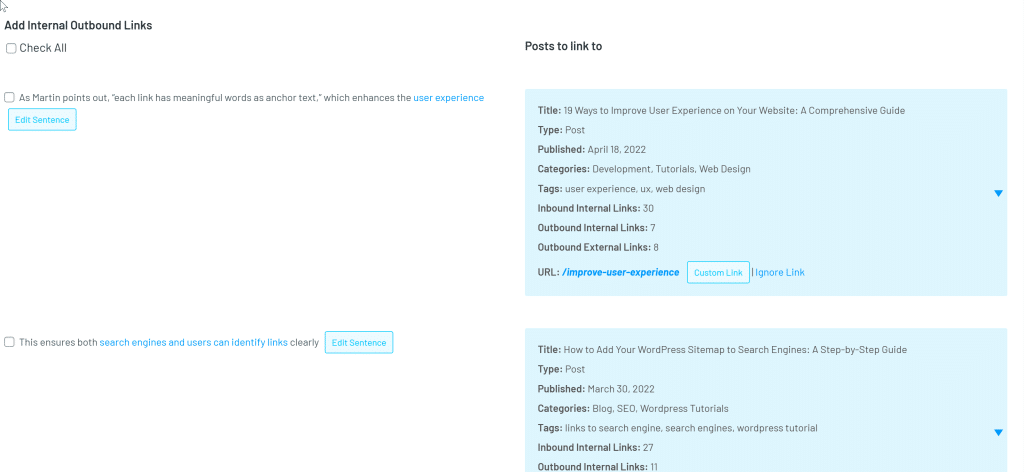
- Install and Activate the Plugin: Begin by purchasing LinkWhisper from their website. Once downloaded, install and activate it through your WordPress dashboard.
- Configure Settings: Navigate to the LinkWhisper settings page. Here, you can adjust various options such as how many link suggestions to display and whether to include links from specific categories.
- Write or Edit a Post: As you create or modify a blog post, LinkWhisper will automatically show suggested internal links in the sidebar.
- Review Suggested Links: Take time to evaluate the suggested links. LinkWhisper provides relevant articles based on your keyword usage, ensuring that the links are contextually appropriate.
- Insert Links: Click on the suggested links to easily incorporate them into your content. You can modify the anchor text as desired to ensure it matches your writing style and intent.
- Publish and Monitor: After incorporating internal links, publish your post. Regularly monitor your internal links and use LinkWhisper’s analytics feature to assess the effectiveness of your linking strategy over time.
By utilising LinkWhisper, you empower yourself to maintain a robust internal linking strategy effortlessly, enhancing both SEO performance and user engagement across your WordPress site. This tool not only saves you time but also enriches the reader’s experience by guiding them through your wealth of content.
5 Conclusion
Incorporating a thoughtful internal linking strategy is essential for both user engagement and SEO. By using meaningful anchor text and ensuring the correct HTML structure, you not only enhance the readability of your content but also aid Googlebot in understanding your site’s structure.
Remember to evaluate your links periodically and keep them relevant to ensure they serve their purpose effectively. As Martin summarizes, “Links are important for users and bots to find related content on a page.” Embrace this practice, and watch your site flourish!



